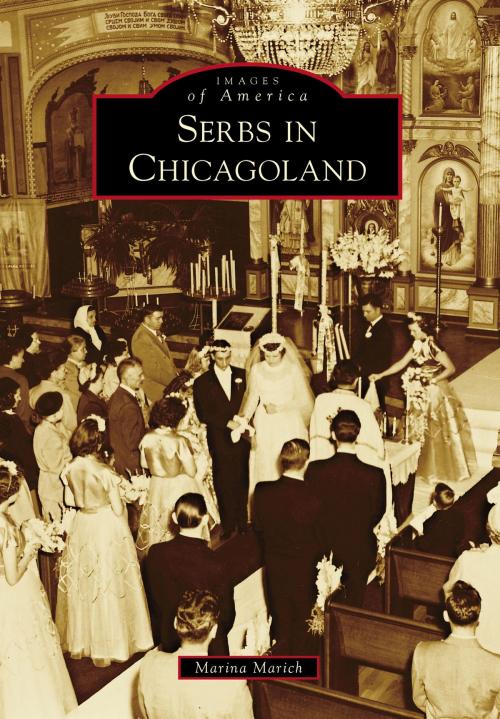Serbs in Chicagoland
Nonfiction, Art & Architecture, Photography, Pictorials, History, Social & Cultural Studies, Social Science, Cultural Studies, Ethnic Studies, Fiction & Literature, Literary Theory & Criticism| Author: | Marina Marich | ISBN: | 9781439652985 |
| Publisher: | Arcadia Publishing Inc. | Publication: | August 31, 2015 |
| Imprint: | Arcadia Publishing | Language: | English |
| Author: | Marina Marich |
| ISBN: | 9781439652985 |
| Publisher: | Arcadia Publishing Inc. |
| Publication: | August 31, 2015 |
| Imprint: | Arcadia Publishing |
| Language: | English |
Chicagoland boasts the world's largest population of Serbs outside of Serbia. Seeking economic opportunities and religious freedom, Serbs first settled in the area more than 100 years ago. Many found work in steel mills and other industries along the banks of Lake Michigan. The first Serbian Orthodox church in the Chicago area began serving parishioners in 1911, and more than a dozen additional congregations were built for the growing numbers of Serbs who arrived after World War II. Civic organizations, such as the Circle of Serbian Sisters, were established to honor and uphold customs from the "old country." Traditional Kolo dancing groups, tambura ensembles, and performance troupes have entertained Serbs and non-Serbs alike. Actor Karl Malden, perhaps the most famous Serbian American from the Chicagoland area, first took the stage in theater productions at his family's Gary, Indiana, Serbian Orthodox church. After the devastating wars in the Balkans in the 1990s, a new wave of Serbian immigrants arrived in Chicago, demonstrating that the city remains a welcoming place due to its abundance of Serbian culture, churches, and community.
Chicagoland boasts the world's largest population of Serbs outside of Serbia. Seeking economic opportunities and religious freedom, Serbs first settled in the area more than 100 years ago. Many found work in steel mills and other industries along the banks of Lake Michigan. The first Serbian Orthodox church in the Chicago area began serving parishioners in 1911, and more than a dozen additional congregations were built for the growing numbers of Serbs who arrived after World War II. Civic organizations, such as the Circle of Serbian Sisters, were established to honor and uphold customs from the "old country." Traditional Kolo dancing groups, tambura ensembles, and performance troupes have entertained Serbs and non-Serbs alike. Actor Karl Malden, perhaps the most famous Serbian American from the Chicagoland area, first took the stage in theater productions at his family's Gary, Indiana, Serbian Orthodox church. After the devastating wars in the Balkans in the 1990s, a new wave of Serbian immigrants arrived in Chicago, demonstrating that the city remains a welcoming place due to its abundance of Serbian culture, churches, and community.















